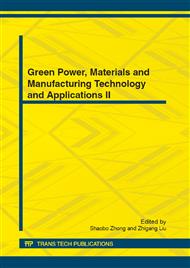[1]
Alena Otto, Armin Scholl: Incorporating ergonomic risks into assembly line balancing[J], European Journal of Operational Research, vol. 212(2011), no. 2, pp.277-286.
DOI: 10.1016/j.ejor.2011.01.056
Google Scholar
[2]
Hilla, W., Produktivität und Ergonomie gemeinsam entwickeln. Erfahrungenaus der betriebsärztlichen Tätigkeit bei Audi AG. Presentation at MTM Bundestagung, Stuttgart. (2006).
Google Scholar
[3]
Costa, A.M., Miralles, C., Job rotation in assembly lines employing disabled workers[J], International Journal of Production Economics, vol. 120(2009), p.625–632.
DOI: 10.1016/j.ijpe.2009.04.013
Google Scholar
[4]
Ruifeng Yu: Optimization Research on Workplace Facility Layout Problem Based on Human Factors[D], Tsinghua University, (2004).
Google Scholar
[5]
Puhong li, Jun Zhou, Jianxin Deng, The Evaluating and Quantizing of Human Factors at Workplace[J], Advanced Materials Research, vol. 328-330(2011) , pp.1045-1048.
DOI: 10.4028/www.scientific.net/amr.328-330.1045
Google Scholar
[6]
Scholl, A., Becker, C., State-of-the-art exact and heuristic solution procedures for simple assembly line balancing[J], European Journal of Operational Research, vol. 168(2006), p.666–693.
DOI: 10.1016/j.ejor.2004.07.022
Google Scholar
[7]
Burcin Cakira, Fulya Altiparmakb, Berna Dengiza, Multi-objective optimization of a stochastic assembly line balancing: A hybrid simulated annealing algorithm[J], Computers & Industrial Engineering, vol. 60(2011), no. 3, p.376–384.
DOI: 10.1016/j.cie.2010.08.013
Google Scholar
[8]
Gholam Reza Esmaeilian1, et. al., A tabu search approach for mixed-model parallel assembly line balancing problem (type II) [J], International Journal of Industrial and Systems Engineering, vol. 8(2011), no. 4, pp.407-431.
DOI: 10.1504/ijise.2011.041803
Google Scholar
[9]
Tanzina Zamana, Sanjoy Kumar Paula, Abdullahil Azeema, Sustainable operator assignment in an assembly line using genetic algorithm[J], International Journal of Production Research, Available online: 21 Dec (2011).
Google Scholar


